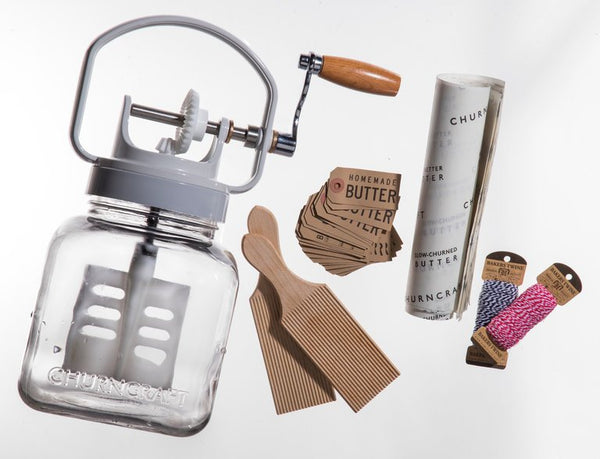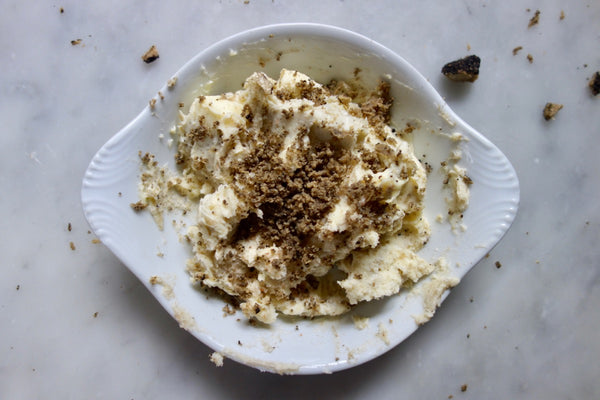Your Cart is Empty

Before modern refrigeration, American farmers used to make cultured butter. They would leave milk out overnight and the cream would naturally separate from the milk. While unrefrigerated, micro-organisms develop in milk, causing it to turn slightly sour. The tangy cream can then be churned into butter, which retains the unique, nutty flavor. This common practice was stopped when dairy pasteurization became mainstream in the United States.
Nowadays, many European buttermakers add live cultures back into their pasteurized milk. Here in America, farmers do not take the time to re-culture cream and that is why sweet cream butter is now standard throughout America.
Over the years, Americans came to prefer sweet cream butter. However, since the 1990s, imported European butter has grown increasingly more popular. Dairy farmers around the country are starting to make their own cultured butter once again and people are craving the distinctive taste. From Vermont Creamery to Diane St. Clair of Animal Farm, cultured butter is making a name for itself stateside.
1. Remove the cultured cream from the refrigerator and let it sit until it reaches room temperature.
2. For a 1 gallon churn, pour 2 quarts (8 cups) of cream into your churn.
– Churn should be approximately half full of cream.
3. Churn for approximately 15 minutes.
– At first, the liquid will slosh around.
– Slowly, the cream begins to become whipped cream and fills the churn.
– Then, globules of butter start to appear. They stick together and form clumps of butter.
– The process is finished when there are two distinct parts: buttermilk and thick, creamy butter.
4. Pour out buttermilk from churn – be sure to save your buttermilk for cooking!
5. Place butter in a bowl and rinse with ice cold water.
6. Use your hands, a large spoon or a wooden butter paddle to press and knead the residual buttermilk out of the butter.
– This step is very important. If buttermilk is left in the fresh butter, it will not last for more than two-three days in the fridge.
7. Rinse again. When the water runs clear, the butter should be free of buttermilk.
8. Salt your butter to taste.
9. Shape and tightly wrap your butter for storing.
– Cultured butter typically lasts for 10 days in the refrigerator.
– Butter easily absorbs other odors so make sure it is tightly-sealed.
– You can also freeze butter – it will last for several months.
Cultured butter is an exquisite treat. Though some people prefer sweet cream butter, I always choose cultured butter when I can.
Comments will be approved before showing up.


What an honor to be featured in The New York Times! We are so proud to have gotten a stamp of approval from Florence Fabricant, food critic of the NYT.
